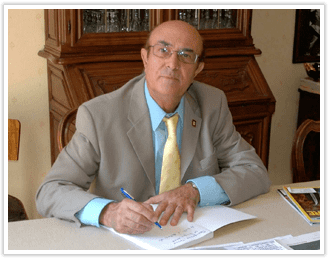Nationality American Role Physicist | Name Ruggero Santilli Spouse Carla | |
 | ||
Institutions MIT, Harvard, Boston University Known for Hadronic Physics, Hadronic Chemistry, Magnecules, Controlled Intermediate Nuclear Fusion Books Foundations of hadronic chemistry, Foundations of Theoretic, Isodual Theory of Antimatter, Foundations of Theoretic, Elements of Hadronic Mechanics | ||
The principles of ruggero santilli demostrated
Ruggero Maria Santilli (born September 8, 1935) is an Italo-American nuclear physicist. Mainstream scientists dismiss his theories as fringe science, which Santilli, in his turn, describes as a mainstream conspiracy against novel science.
Contents
- The principles of ruggero santilli demostrated
- Ruggero Santilli from Thunder Energies Corporation on CEO Money
- Biography
- Magnecule theory
- HHO gas
- Conspiracy theories and lawsuits
- Selected publications
- References
Ruggero Santilli from Thunder Energies Corporation on CEO Money
Biography
Ruggero Maria Santilli was born in Capracotta and attended high school in Agnone, Province of Isernia, in the Italian region of Molise.
Santilli studied physics at the University of Naples and went on to attend the Graduate School in Physics of the University of Turin, graduating in 1966.
In September 1981 Santilli established the Institute for Basic Research and became its President. Santilli has been the Founder and Chief Scientist ( 2007-2013) of MagneGas Corporation. Currently, Santilli is President of the Institute for Basic Research, Founder and Chief Scientist of Thunder Fusion Corporation. On the 22nd of January 2009 he was awarded with the Mediterranean Award for Science and Research from the Fondazione Mediterraneo.
Santilli is the Founder and the Honorary Editor in Chief of the Hadronic Journal and Algebras, Groups and Geometries published by Hadronic Press.
Magnecule theory
Santilli claims to have developed novel fuels, named "MagneGas" and "MagneHydrogen," produced by plasma arc gasification of liquid waste. Santilli claims that these fuels are composed of magnecules. These hypothetical particles are a type of theoretical chemical species proposed by Santilli, distinguished from better-known species by containing a novel type of bond called a "magnecular bond", which he claims consists of atoms held together by magnetic fields which arise from "toroidal polarization" of their electron orbitals. Neither these claims nor the existence of magnecules have been accepted by the scientific community.
Santilli also rejects the prevailing view of chemistry as being well-described by quantum mechanics (see quantum chemistry). For example, he argues that the covalent bond is impossible in quantum mechanics, as he cannot conceive of a manner in which two same-charged electrons can come together to cause an attractive interaction.
HHO gas
Magnecules have also been invoked as an explanation for a purported "HHO gas", which Santilli claims is "a new form of water" produced by electrolysis. The name comes from its chemical structure (H × H)–O, claimed by Santilli, where “×” represents a "magnecular bond" and “−” a conventional molecular bond. Santilli claims that his devices produce HHO gas, with a number of unique properties, instead of the usual oxyhydrogen gas, which is simply a mixture of diatomic hydrogen and oxygen gases.
In 2006, Brown University Professor of Engineering Joseph M. Calo described a number of errors in Santilli's article and stated that the descriptions are insufficient to reproduce the data, which is required for a scientific method. Martin O. Cloonan, Professor of Chemistry at the Chemistry School of Science, Galway-Mayo Institute of Technology criticized arguments in favor of what he saw the main point of Calo's commentary, namely that the behavior of the "HHO gas" may be reasonably explained by a regular mixture of "hydrogen, oxygen and watervapor" and concluded that the issue of the existence of magnecules remains open.
A rebuttal of Calo's claims was also published by a J. V. Kadeisvili. Member of Dutch scientific skepticism society Stichting Skepsis Pepijn van Erp failed to find any credentials of Kadeisvili despite multiple requests, which have led him to believe that there is no such person.
Conspiracy theories and lawsuits
In his book Il Grande Grido: Ethical Probe on Einstein's Followers in the U.S.A, an Insider's View (Santilli 1984), Santilli claims that in many institutions there is an effective conspiracy to suppress or not investigate novel theories which may conflict with established scientific theories, such as Einstein's theory of relativity. According to Santilli, institutions receive funding and have established entire departments dedicated to long established theories, and so he argues that these same institutions are ill-equipped to challenge their own scientific paradigms with new theories. Santilli claimed that a number of scientists, including Nobel Laureates Sheldon Glashow and Steven Weinberg, conspired to stop him from conducting research which might have led to the inapplicability of part of Einstein's theory of relativity while he was at Harvard. He has complained that papers he has submitted to peer-reviewed American Physical Society journals were rejected because they were controlled by a group of Jewish physicists led by Steven Weinberg.
Santilli has filed a number of lawsuits alleging the suppression of his scientific ideas, including a lawsuit against the magazine Infinite Energy.
